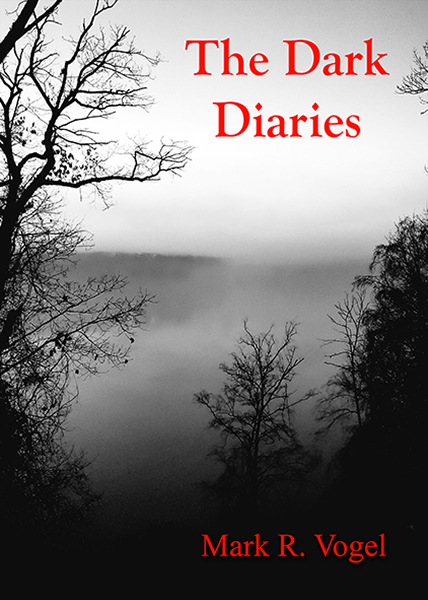Now, I must admit, many B-productions or B-themed works don’t attempt to make a serious work of horror due to their financial limitations. With this in mind, preparing to watch William Shatner in a film titled Kingdom of the Spiders, I readied myself for either campy fun or a futile misfire. However, I must state that director John “Bud” Cardos and his crew kept their heads about them and remained focused while creating a horrific shot-in-the-dark using a one-chance-in-a-million premise.
The plot is basic. Rockert “Rack” Hansen (William Shatner), a small town veterinarian, is called into a local ranch in Verde Valley, Arizona to investigate the death of a calf owned by Walter Colby (Woody Strode). Unable to supply a ready explanation upon why a seemingly healthy animal would die in such a curious manner, he has samples sent to the labs at Arizona State University. The results come back in the hands of entomologist Diane Ashley (Tiffany Bolling) with the perplexing news that the calf died of a spider bite. The two go to the ranch to deliver the report to its owner. After receiving the news, Colby discloses his discovery of a spider hill which contains, Diane estimates, thousands of arachnids. Complications ensue as the spiders begin to take over the town.
Now, I must tip my hat to the writers, Alan Caillou, Stephen Lodge, Richard Robinson, and Jeffrey Sneller, on two counts. One, they do not exacerbate matters by mutating the antagonists via radiation (easy to do given the locale). Instead, they allow the spiders to become a threat due to their increasing numbers (a plausible scenario for fear). Two, Caillou and company fully justify the presence of the plight: The spiders, who would ordinarily be found six-hundred miles south, have migrated in such of food after, what Diane theorizes, is the effects of the excessive use of DDT (which doesn’t effect larger organisms such as spiders yet readily kills their prey). Yes, I’m aware that this isn’t entirely accurate but the audience allows this axiomatic omission due to who is uttering it and the manner in which she voices her hypothesis.
The writers don’t end their duties there. They flush out the film by giving it a sense of local color as well as believable dialogue for the various personalities involved (especially for the conversations between the antagonistic relationship of the cowboy Rack and city slicker Diane). The adages of the region are freely uttered by the cast but are never imposed arbitrarily, thus allowing the viewer great ease in settling into the film because the characters seem at ease with themselves.
There are other reasons I was surprised and, as a consequence, respect this little gem of a movie. A large portion of the budget went to the acquisition of thousands of spiders when, given the premise, the production team could have easily settled for replicas. The effort paid off for the screen perpetually crawls throughout. I am not an arachnophobe but, midway through the film, I caught myself empathetically scratching for the characters.
Predictably, the film isn’t without problems. The ending looks to be a painting rather than a miniature set piece. Whitey Hughes plays an airplane pilot which, as he attempts to crop dust the surrounding area with pesticides in an attempt to rid the community of the infestation, a group of spiders attack him. For a good thirty seconds we are bombarded with his wily screams in a pitch which many would opt out of in favor of fingernails on a chalkboard. Also, as every character who is bitten by a spider quickly dies, Rack–I’m to guess he’s immune–recovers completely. Lastly, and this is arguable, the fleeing cast doesn’t stomp on the spiders at the beginning. I can see that avoidance might have been the goal but, toward the end when the bugs are running rampant, they do opt for the quick podiatric solution. Yet, unlike most B-productions, Cardos does a great job of pacing the film alongside the tightly structured script.
I will quibble with anyone who wants to state that a wolf spider (in this case a Tarantula) doesn’t spin webs as seen in the film. Anyone who has owned one knows this isn’t the case and this trivia tidbit becomes of the utmost importance for the devastating climax.
In lieu of a few narrative inconsistencies and an acting faux pas, this production stands out as one of the best revenge-of-nature films in recent memory. John “Bud” Cardos achieved most of what he set out to do with this traditionally scrutinized scenario and added to the horror achieves an admirable work which should be readily applauded.
-Egregious Gurnow
- Interview with J.R. Bookwalter - January 22, 2015
- Interview with Andrew J. Rausch - January 22, 2015
- Interview with Rick Popko and Dan West - January 22, 2015
- Interview with Director Stevan Mena (Malevolence) - January 22, 2015
- Interview with Screenwriter Jeffery Reddick (Day of the Dead 2007) - January 22, 2015
- Teleconference interview with Mick Garris (Masters of Horror) - January 22, 2015
- A Day at the Morgue with Corri English (Unrest) - January 22, 2015
- Interview with Writer/Director Nacho Cerda (The Abandoned, Aftermath) - January 22, 2015
- Interview with Actress Thora Birch (Dark Corners, The Hole, American Beauty) - January 22, 2015
- Interview with Actor Jason Behr, Plus Skinwalkers Press Coverage - January 22, 2015


